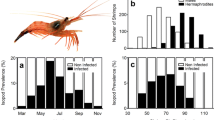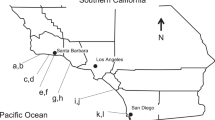Abstract
Parasites can decrease male mating success in host species in various ways, in particular by affecting male competitive ability for access to females. However, male-male competition can take different forms (i.e. interference vs exploitation competition) and which type of competition is most affected by parasites is not always clear. We investigated the influence of two acanthocephalan parasites Pomphorhynchus laevis and Polymorphus minutus on the pairing success of their intermediate host, Gammarus pulex, using field-based studies and complementary laboratory-based studies. We first studied male pairing success in the field using four large samples of paired and unpaired individuals collected at different dates. In three of the samples, the effects of size and parasite infection were significant, whereas for one sample only male size had a significant effect. There was no difference in size distributions between infected and uninfected gammarids. Large males were paired more often than smaller males, and uninfected males were paired more frequently than infected males, the pairing success of P. minutus-infected males being more severely affected than that of P. laevis-infected males. We then experimentally tested the ability to enter into precopula with a receptive female in the presence or absence of competitors. In competitive situations, the pairing success of P. laevis- and P. minutus-infected males was significantly lower than that of uninfected males, with pairing success being more affected in P. laevis-infected than in P. minutus-infected males. In the absence of competition, males infected with P. laevis were significantly less likely to enter into precopula compared with uninfected males and P. minutus-infected males, whereas there was no difference between uninfected and P. minutus-infected males in their inclination to pair with a receptive female. However, for both parasites, latency time to pair formation was significantly shorter for uninfected than for infected males. In a third experiment, we tested for a potential effect of vertical segregation on the pairing success of infected and uninfected males, but found no evidence for it. We conclude that infected males may be less competitive than uninfected males in competition by exploitation between males for females.
Similar content being viewed by others
Author information
Authors and Affiliations
Additional information
Electronic Publication
Rights and permissions
About this article
Cite this article
Bollache, L., Gambade, G. & Cézilly, F. The effects of two acanthocephalan parasites, Pomphorhynchus laevis and Polymorphus minutus, on pairing success in male Gammarus pulex (Crustacea: Amphipoda). Behav Ecol Sociobiol 49, 296–303 (2001). https://doi.org/10.1007/s002650000300
Received:
Revised:
Accepted:
Published:
Issue Date:
DOI: https://doi.org/10.1007/s002650000300




